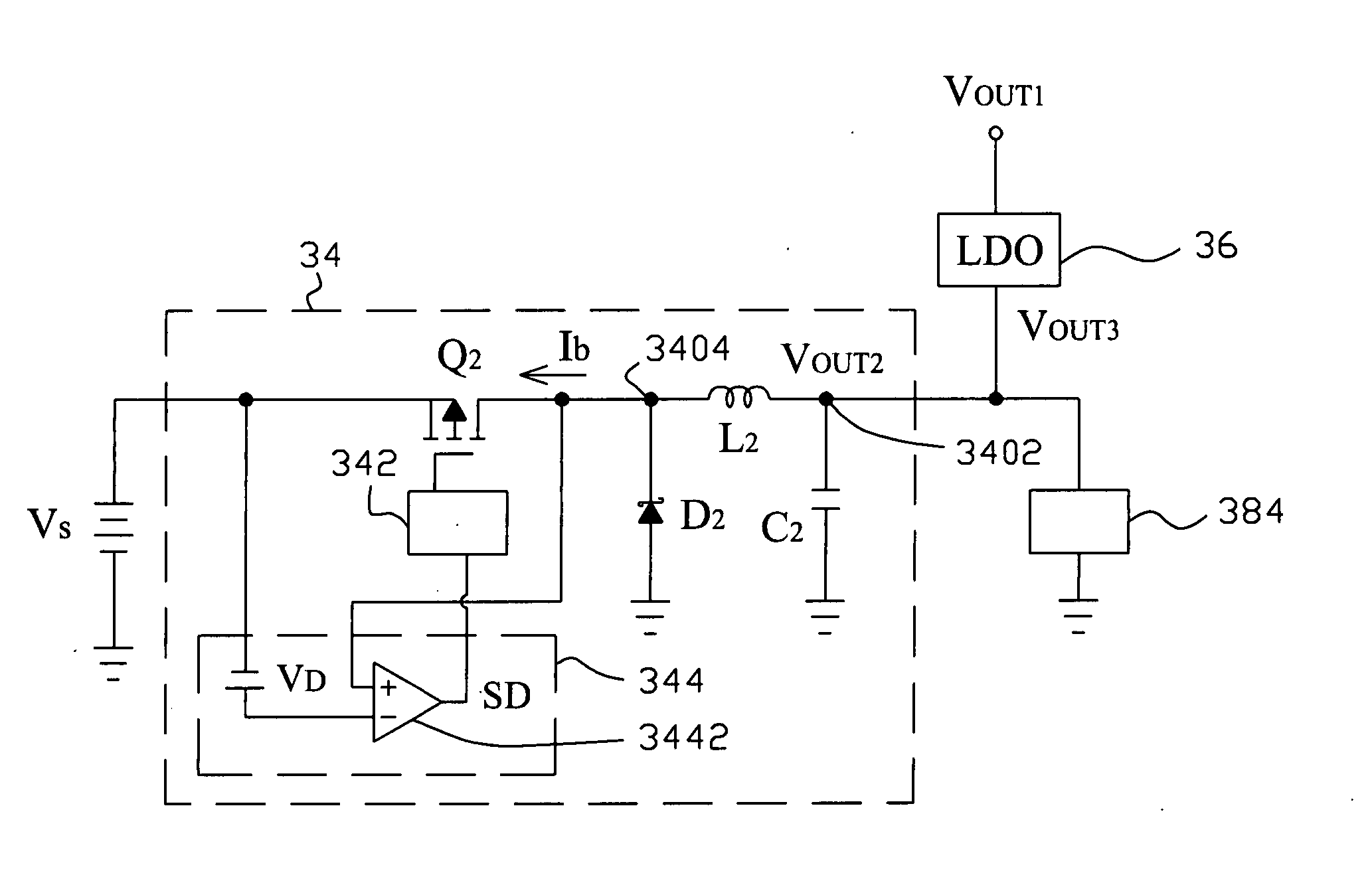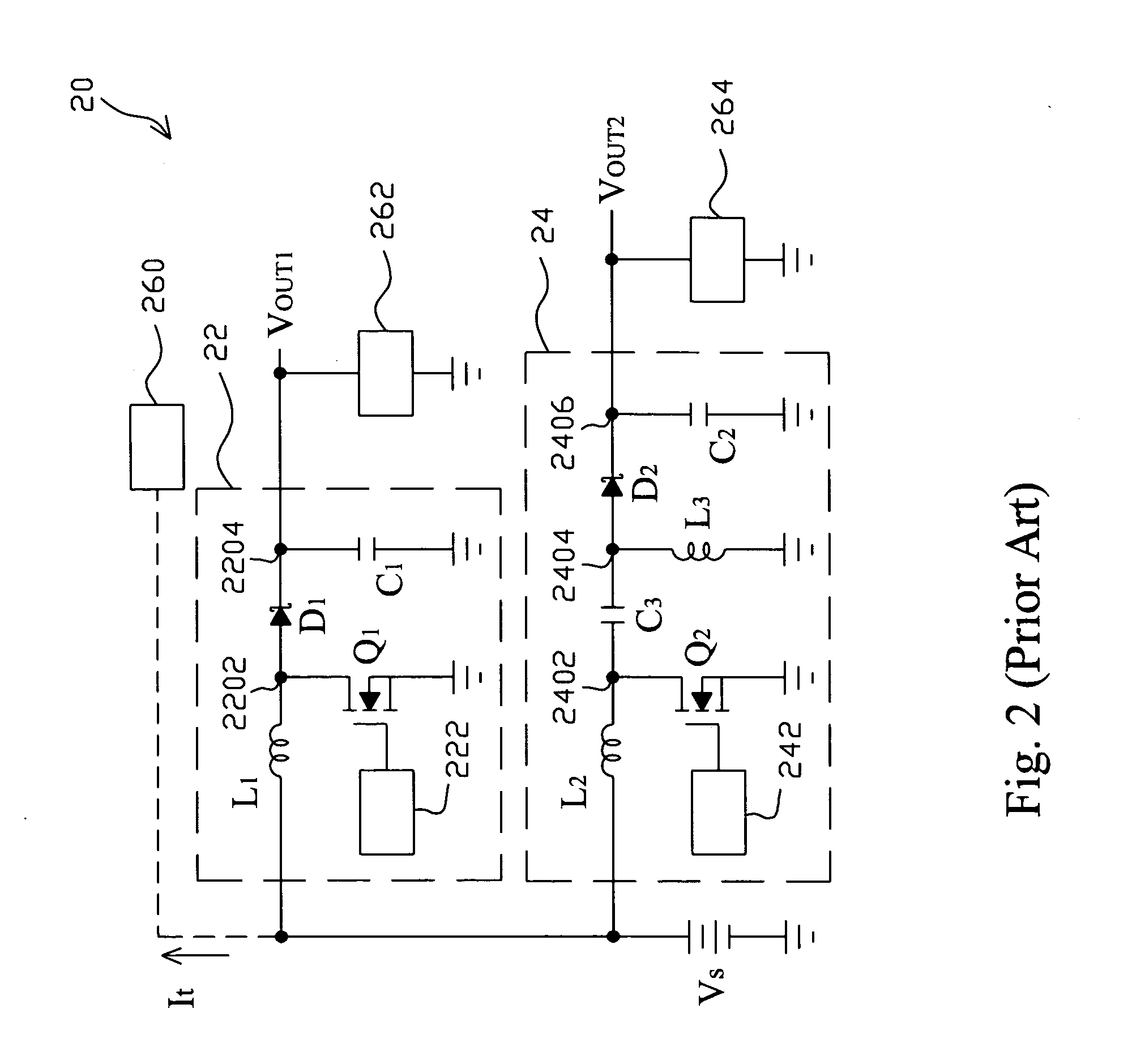Efficiency improved voltage converter
a voltage converter and efficiency improvement technology, applied in the field of voltage converter efficiency improvement, can solve the problems of buck-boost converters that do not have high conversion efficiency, buck-boost converters b>, gradual decay of battery voltage with its operational time or sudden drop, etc., and achieve the effect of improving efficiency
- Summary
- Abstract
- Description
- Claims
- Application Information
AI Technical Summary
Benefits of technology
Problems solved by technology
Method used
Image
Examples
Embodiment Construction
[0016]FIG. 3 shows an embodiment according to the present invention, in which linear mode and switch mode converters are combined together to improve the efficiency thereof. A voltage converter 30 comprises a boost converter 32 connected with a supply voltage VS to boost up the supply voltage VS to generate an output voltage VOUT1, at its output 3202 to supply for a load 382 connected to the output 3202, a buck converter 34 connected with the supply voltage VS to buck down the supply voltage VS to generate another output voltage VOUT2 at its output 3402 to supply for another load 384 connected to the output 3402, and an LDO regulator 36 connected between the outputs 3202 and 3402 to convert the output voltage VOUT1 to yet another output voltage VOUT3 at the output 3402 connected with the load 384 when the output voltage VOUT2 is lower than a threshold. The boost converter 32 comprises an inductor L1 connected between the supply voltage VS and a node 3204, a diode D1 connected betwee...
PUM
 Login to View More
Login to View More Abstract
Description
Claims
Application Information
 Login to View More
Login to View More - R&D
- Intellectual Property
- Life Sciences
- Materials
- Tech Scout
- Unparalleled Data Quality
- Higher Quality Content
- 60% Fewer Hallucinations
Browse by: Latest US Patents, China's latest patents, Technical Efficacy Thesaurus, Application Domain, Technology Topic, Popular Technical Reports.
© 2025 PatSnap. All rights reserved.Legal|Privacy policy|Modern Slavery Act Transparency Statement|Sitemap|About US| Contact US: help@patsnap.com



